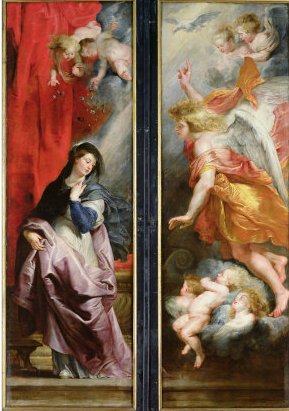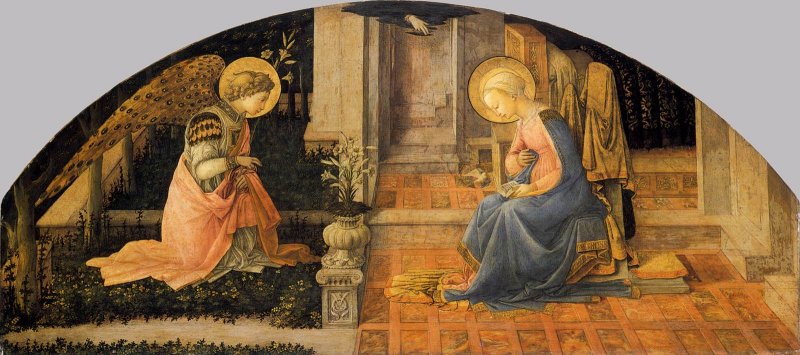|
It seems surprising to think of an image of the Annunciation as having a
function beyond a straightforward devotional image. But this is because
we now tend to compartmentalise the sacred and the secular in a way that
would have seemed strange in the past.
One secular function for the image was as a gift to celebrate
a birth. A nativity scene could perform the same function, of course. The
painting could be kept in a domestic setting, or placed in a church as a
offering to give thanks for a safe delivery.
Annunciations were often two-part images - Gabriel in one part, Mary in
the other. This arrangement was ideal for a pair of doors. Doors had a
symbolic significance - revelation, and a way through the the new world to
come. The 12th century 'Holy Doors' (below left) are from St
Catherine's Monastery in Sinai.
The two-part Annunciation was often used for the outer wings of a
triptych. If painted on the outside of the triptych, as in this version by
Rubens, (below right) the doors could be opened to 'reveal' the events
behind them.
|
|
We have looked at this painting by
Fra Filippo Lippi before, but haven't talked about its shape. It was
probably a lunette over a door in the Medici palace. Today, the idea of
using religious images for domestic decoration seems slightly shocking,
but why?
|


